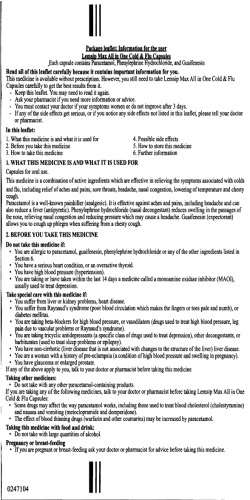
FOX-FORDYCE DISEASE
FOX-FORDYCE DISEASE What are the aims of this leaflet? This leaflet has been written to help you understand Fox-Fordyce disease. It explains what Fox-Fordyce disease is and why it occurs. This leaflet also details what treatments are available, and where you can get more information. What is Fox-Fordyce disease? Fox-Fordyce disease is a disease of the apocrine sweat glands of the skin. The common areas for the condition are the underarms, groin and/or around the nipples. Patients with this condition experience itchy bumps on the skin near to hairs. What causes Fox-Fordyce disease? The disease is believed to be caused by blockage of the apocrine sweat glands. It is not yet known why these glands become blocked. Fox-Fordyce disease commonly occurs under conditions of excess heat, humidity and stress. It can develop in anyone at any age, but it most commonly arises in women of child-bearing age. Hormones are therefore believed to play a role, but the exact link has not yet been discovered. Is Fox-Fordyce disease hereditary? No, Fox-Fordyce disease is not hereditary. What are the symptoms of Fox-Fordyce disease? The rash can be very itchy, especially when patients are experiencing high levels of stress or emotion. It is also worsened by heat and friction, and may become troublesome at night. 4 Fitzroy Square, London W1T 5HQ Tel: 020 7383 0266 Fax: 020 7388 5263 e-mail: admin@bad.org.uk Registered Charity No. 258474 What does Fox-Fordyce disease look like? Fox-Fordyce disease usually appears as small water-filled blisters, skincoloured spots or darkened spots at the base of the hair follicles. How is Fox-Fordyce disease diagnosed? The diagnosis is normally made “clinically,” from a patient’s history and by examining the appearance of the rash. Occasionally a skin biopsy may be performed to rule out other diseases. A skin biopsy is when a small sample of skin is removed and examined under a microscope. Can Fox-Fordyce disease be cured? There is no simple cure for Fox-Fordyce disease. In some people it improves on its own. In the meantime, the symptoms can be controlled to varying extents with treatments. How can Fox-Fordyce disease be treated? Large trials have not been carried out into treatments for Fox-Fordyce disease. Treatment is difficult because no single treatment has been shown to be very effective. Most treatment recommendations come from single reports in the research literature and so the advice is limited by lack of evidence. Topical Therapies (treatment applied to the skin): There are a number of topical therapies. Gels and lotions are better than more greasy creams and ointments. Topical steroid creams can relieve itch. Strong steroids cannot be used continuously however, as they may cause thinning of the skin. Steroids have been injected into problematic areas with some success but again there is a risk of causing skin thinning. Topical calcineurin inhibitors (e.g. Protopic ointment or Elidel cream) can also be used to calm itching and do not cause skin thinning but can cause a burning sensation. Topical retinoids e.g. Adapalene may be used to try and reduce the rash, but can cause skin irritation. Topical antibiotics such as clindamycin have also been used successfully. Phototherapy, using ultraviolet light has been used. Careful consideration is needed as light treatment carries an increased risk of developing skin cancer particularly with long term use. 4 Fitzroy Square, London W1T 5HQ Tel: 020 7383 0266 Fax: 020 7388 5263 e-mail: admin@bad.org.uk Registered Charity No. 258474 Oral Treatments (those taken by mouth): Antihistamine tablets can be used to control itch especially if itch is interrupting sleep. They are normally well tolerated with few side effects but can cause drowsiness. The oral contraceptive pill may be suitable in women who also need birth control. It may help Fox-Fordyce disease symptoms by altering hormone levels but when treatment is stopped the rash is likely to recur. Oral isotretinoin (also known as Roaccutane), is a drug that can improve symptoms whilst it is being taken. This drug can cause side effects including birth abnormalities. It is used with caution in women of child-bearing age: a pregnancy prevention programme needs to be followed during treatment and for 1 month after stopping the medication. Surgical Options: Surgery can remove the affected areas and therefore attempt a cure. The area may be either burnt or cut out and may lead to scarring. Self care (What can I do?) Try not to pick and scratch as this can make the situation worse and lead to infection of the skin lesions. Avoid putting anything irritating onto the areas. Avoid greasy creams as they can cause further blockage of the apocrine sweat glands. Avoiding excessive heat, humidity, or stress does help some people. Where can I get more information about Fox-Fordyce disease? Web links to detailed leaflets: http://www.dermnetnz.org/hair-nails-sweat/fox-fordyce.html For details of source materials used please contact the Clinical Standards Unit (clinicalstandards@bad.org.uk). This leaflet aims to provide accurate information about the subject and is a consensus of the views held by representatives of the British Association of Dermatologists: its contents, however, may occasionally differ from the advice given to you by your doctor. This leaflet has been assessed for readability by the British Association of Dermatologists’ Patient Information Lay Review Panel 4 Fitzroy Square, London W1T 5HQ Tel: 020 7383 0266 Fax: 020 7388 5263 e-mail: admin@bad.org.uk Registered Charity No. 258474 BRITISH ASSOCIATION OF DERMATOLOGISTS PATIENT INFORMATION LEAFLET PRODUCED MARCH 2014 REVIEW DATE MARCH 2017 4 Fitzroy Square, London W1T 5HQ Tel: 020 7383 0266 Fax: 020 7388 5263 e-mail: admin@bad.org.uk Registered Charity No. 258474
© Copyright 2025





















